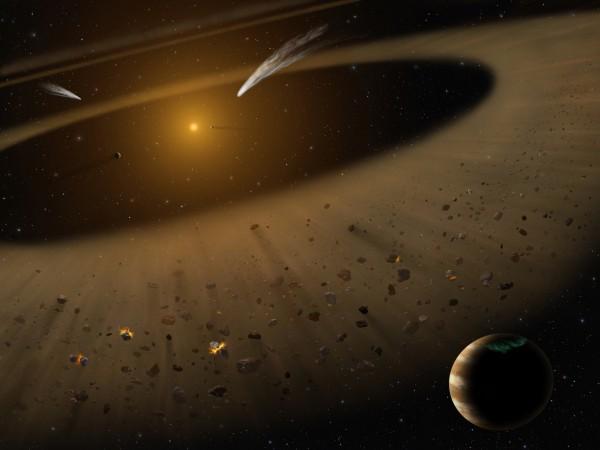
Man's quest to know more about the vast universe received a shot in its arm after a new planetary system was discovered by NASA's Stratospheric Observatory for Infrared Astronomy (SOFIA), a flying observatory.
Also Read: NASA's Chandra X-ray Observatory discovers a giant hot wave in the Perseus galaxy [VIDEO]
The findings revealed that this planetary system possesses an architecture which is significantly like our early solar system.
Kate Su, who is an associate astronomer at the University of Arizona and the university's Steward Observatory, is the lead author of this study.
SOFIA is a Boeing 747SP jetliner which has been altered to carry a 100-inch diameter telescope which possesses a diameter of 100 inches (2.5 meters); the diameter is bigger in comparison to the Spitzer space telescope whose diameter is equal to 33.5 inches (0.85 meters). With the help of SOFIA, the researchers could study the details that were three times smaller; this wouldn't have been possible with Spitzer.
The planetary system discovered is located at a distance of 10.5 light years away in constellation Eridanus' southern constellation. A Sun-like star named Epsilon Eridani, aka eps Eri, which is believed to be less than a billion years old, was believed by astronomers as capable to reveal more about our solar system. The location is very apt for the astronomers to research about planet formations around Sun-like stars.
"Additionally, SOFIA's powerful mid-infrared camera called FORCAST, the Faint Object infraRed CAmera for the SOFIA Telescope, allowed the team to study the strongest infrared emission from the warm material around eps Eri, at wavelengths between 25-40 microns, which are undetectable by ground-based observatories," a NASA statement said.
The data collected by NASA's Spitzer Space Telescope was studied by the researchers in 2009 in order to explain about the eps Eri's debris disk which was formed from the remains of the space rock collisions and planet formations. The researchers revealed that this debris disk comprised different belts of asteroids, just like the Kuiper and asteroid belts of our solar system.
This space dust can be in the form of dust, gas and also tiny rocky and icy bodies. Further details revealed that a planet having a mass similar to that of Jupiter orbits the eps Eri star at a similar distance at which the gas giant Jupiter orbits the Sun.
Marengo revealed that the findings are crucial as they confirm epsilon Eridani is a good model of the early days of our solar system and can provide hints at how our solar system evolved.
"This star hosts a planetary system currently undergoing the same cataclysmic processes that happened to the solar system in its youth, at the time in which the moon gained most of its craters, Earth acquired the water in its oceans, and the conditions favourable for life on our planet were set," one of the co-authors Marengo stated in a summary of the project, as reported by Phys.org.
"The high spatial resolution of SOFIA combined with the unique wavelength coverage and impressive dynamic range of the FORCAST camera allowed us to resolve the warm emission around eps Eri, confirming the model that located the warm material near the Jovian planet's orbit," said Su.
"Furthermore, a planetary mass object is needed to stop the sheet of dust from the outer zone, similar to Neptune's role in our solar system. It really is impressive how eps Eri, a much younger version of our solar system, is put together like ours," Su said.















